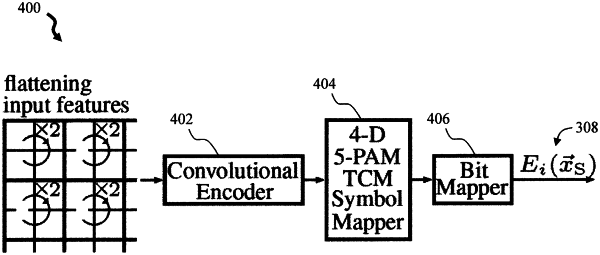| CPC G06F 18/241 (2023.01) [G06N 3/08 (2013.01); H03M 7/3062 (2013.01); H03M 7/3066 (2013.01); H03M 7/6011 (2013.01)] | 14 Claims |

|
1. A method for classification generalization, the method comprising:
encoding original input features from at least one input sample xS with a uniquely decodable code using an encoder E(⋅) to produce encoded input features E(xS), wherein the at least one input sample xS comprises uncoded input features, wherein encoding the original input features further comprises generating multiple encodings of the input features using a four-dimensional (4-D) five-level pulse-amplitude modulation (5-PAM) trellis-coded modulation (TCM) symbol mapper;
feeding the uncoded input features and the encoded input features E(xS) to a base model to build an encoded model, wherein the encoded model comprises the encoder E(⋅) and the base model; and
learning a classification function CE(⋅) using the encoded model, wherein the classification function CE(⋅) learned using the encoded model is more general than that learned using the uncoded input features alone.
|